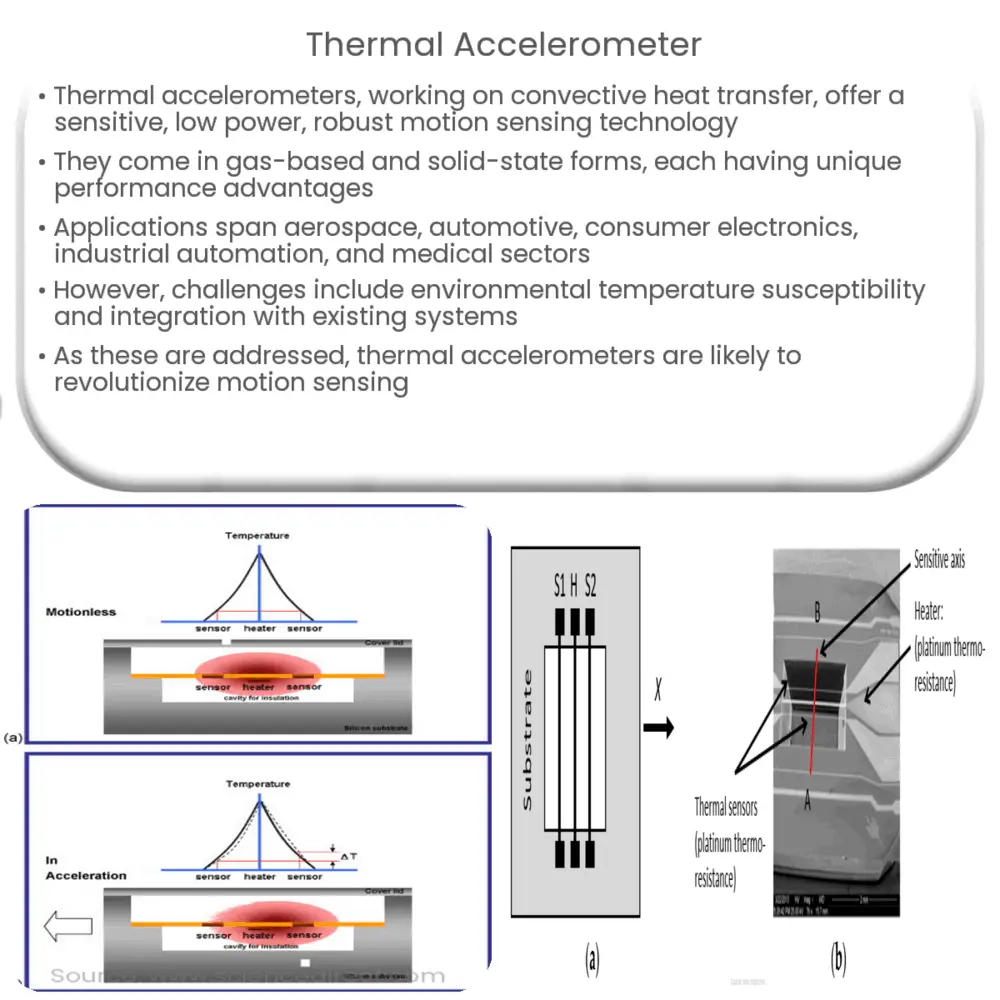Thermal accelerometers are motion sensors utilizing convective heat transfer, offering high sensitivity, low power consumption, and robustness.

Thermal Accelerometer: The Future of Motion Sensing Technology
Introduction
As the world becomes increasingly interconnected and reliant on technology, the demand for efficient and precise sensors continues to grow. One of the latest advancements in the field of motion sensing is the thermal accelerometer. This innovative device offers promising potential for various applications, ranging from aerospace to consumer electronics. In this article, we will explore the underlying principles of thermal accelerometers, their advantages over traditional accelerometers, and their potential applications in different industries.
Principles of Thermal Accelerometers
Thermal accelerometers operate on the basis of convective heat transfer, which is fundamentally different from the mechanical sensing principles of traditional accelerometers. In a thermal accelerometer, a heated element is suspended in a medium, typically air or gas. As the sensor experiences acceleration, the heated element moves relative to the surrounding medium, causing a change in the heat distribution. This change in temperature is measured by strategically placed temperature sensors, which are then used to calculate the acceleration experienced by the device.
There are two primary types of thermal accelerometers: gas-based and solid-state. Gas-based thermal accelerometers utilize a small, hermetically sealed cavity filled with gas as the sensing medium, while solid-state accelerometers use a thin, thermally insulating layer embedded within the sensor structure. Both types of accelerometers offer unique advantages in terms of sensitivity, power consumption, and other performance factors.
Advantages Over Traditional Accelerometers
Thermal accelerometers offer several benefits compared to traditional, mechanically-based sensing technologies. Some of the most notable advantages include:
- High Sensitivity: Thermal accelerometers are capable of detecting extremely small changes in acceleration, making them ideal for applications that require high levels of precision, such as inertial navigation systems.
- Low Power Consumption: As thermal accelerometers rely on the convective heat transfer principle, they consume significantly less power than their mechanical counterparts. This makes them an attractive option for battery-powered devices and energy-efficient applications.
- Robustness: The lack of moving parts in thermal accelerometers reduces the risk of mechanical failure and wear, enhancing their durability and long-term reliability. This is particularly valuable in harsh environments or high-vibration applications.
- Wide Dynamic Range: Thermal accelerometers are capable of operating over a wide range of acceleration levels, making them suitable for various applications that require different levels of sensitivity.
Potential Applications of Thermal Accelerometers
Given their unique advantages, thermal accelerometers hold great promise for a variety of applications across different industries. Some of these potential applications include:
- Aerospace and Defense: High sensitivity and robustness make thermal accelerometers an attractive option for inertial navigation systems, guidance systems, and vibration monitoring in aircraft, missiles, and satellites.
- Automotive: Vehicle stability control, collision detection, and airbag deployment systems can benefit from the high sensitivity and wide dynamic range offered by thermal accelerometers.
- Consumer Electronics: The low power consumption and small form factor of thermal accelerometers make them ideal for integration into smartphones, wearables, and other portable devices for motion tracking and gesture recognition.
- Industrial Automation: Thermal accelerometers can be employed in robotics, machine condition monitoring, and vibration analysis, helping to improve efficiency and reduce downtime in manufacturing and other industrial settings.
- Medical: The high sensitivity of thermal accelerometers makes them suitable for applications such as tremor detection in patients with Parkinson’s disease or other neurological disorders, as well as monitoring of gait and posture in rehabilitation scenarios.
Challenges and Future Outlook
Despite their numerous advantages, thermal accelerometers also face certain challenges that need to be addressed for widespread adoption. One such challenge is the susceptibility of these sensors to temperature variations in the surrounding environment, which may cause drift in the accelerometer’s output. Researchers are actively working on developing calibration techniques and compensation algorithms to mitigate this issue.
Another challenge is the integration of thermal accelerometers with existing systems and technologies, as many current applications are designed around traditional, mechanically-based accelerometers. As the technology continues to mature, it is expected that solutions for seamless integration will be developed, further expanding the potential uses for thermal accelerometers.
In conclusion, thermal accelerometers are an innovative and promising technology with the potential to revolutionize motion sensing across various industries. Their unique advantages, such as high sensitivity, low power consumption, and robustness, make them an attractive option for a wide range of applications. As researchers continue to address the existing challenges and the technology matures, it is likely that thermal accelerometers will play an increasingly important role in the future of motion sensing.




